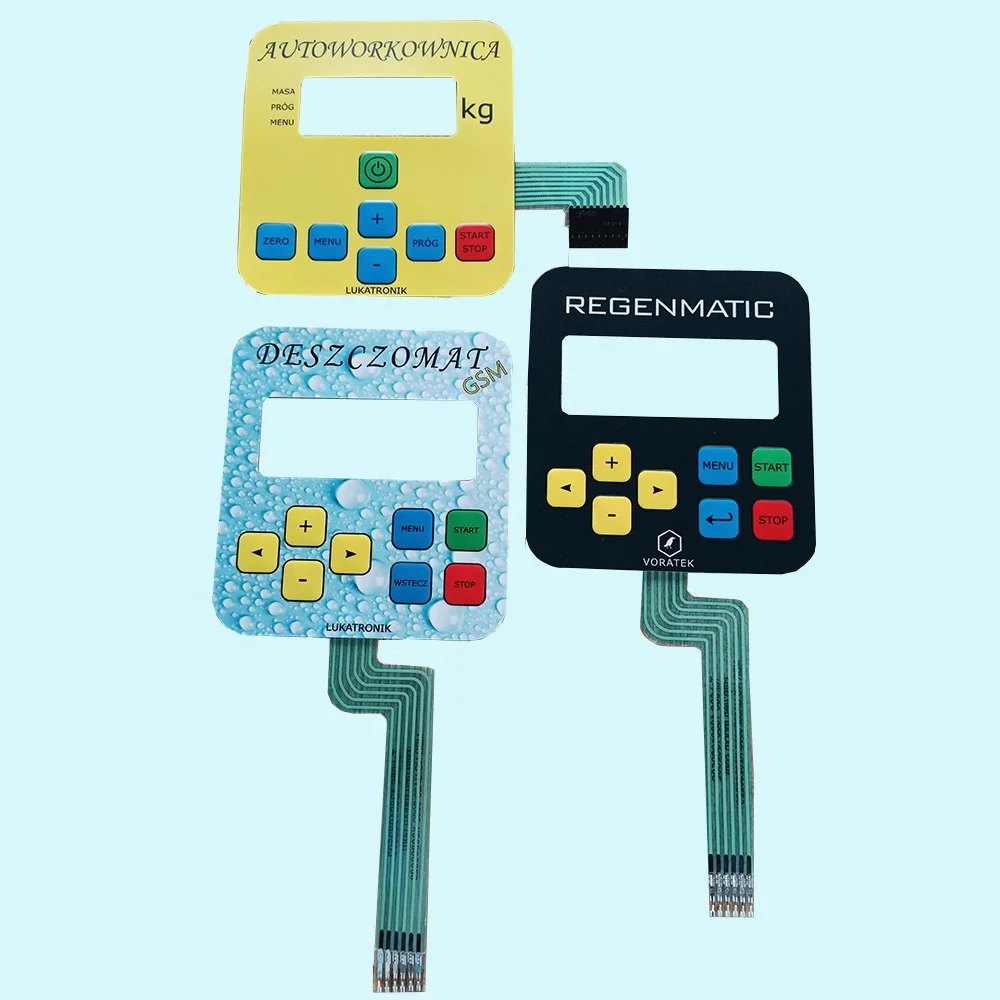Why Membrane Switches are Ideal for Durability and Performance
Why Membrane Switches are Ideal for Durability and Performance
Blog Article
Understanding Membrane Layer Switches Over: The Secret to Sturdy and Reputable Controls

What Are Membrane Switches?
Membrane switches are an advanced option in the world of customer interface technology, combining performance and style effortlessly. These gadgets function as a user interface in between customers and digital systems, incorporating numerous parts right into a portable style. Commonly created from adaptable, slim layers of products, membrane layer buttons are created to respond to touch, allowing individuals to communicate with machinery and electronic devices effectively.
The key components of a membrane button include a published circuit layer, graphic overlay, and a spacer layer that protects against unexpected activation. The visuals overlay can be tailored to mirror brand name identification or customer choices, improving appearances while making certain functionality. Membrane switches are generally made use of in different applications, including clinical gadgets, consumer electronics, and commercial devices, owing to their sturdiness and resistance to environmental variables such as wetness and dust.
Among the crucial advantages of membrane layer buttons is their ability to withstand damage, making them optimal for high-traffic environments. In addition, they are lightweight and require very little space, enabling ingenious designs in item development. On the whole, membrane switches over represent a sensible and effective choice for modern-day electronic user interfaces, marrying innovation with user-centric design principles.
Just How Membrane Switches Work
The procedure of membrane changes joints on a straightforward yet efficient device that translates individual input into digital signals. When an individual presses the switch, the leading layer deforms, allowing a conductive aspect in the circuit layer to make contact with a matching conductive pad on the bottom of the visuals overlay.
The layout of membrane switches can vary, but they commonly include domes or responsive elements to provide feedback to the individual, improving the general experience - membrane switch. The products utilized in membrane layer buttons, such as polyester or polycarbonate, add to their longevity and resistance to ecological factors, including moisture and dirt. The published circuits are normally enveloped, which secures them from wear and tear over time.
Benefits of Membrane Switches

In addition, membrane layer buttons are recognized for their durability. Constructed from robust materials, they are resistant to dust, moisture, and physical wear, which considerably prolongs their life expectancy contrasted to standard mechanical buttons. This toughness makes them specifically ideal for high-traffic settings and applications calling for durability.
One more considerable benefit is the ease of cleaning and upkeep. The smooth surface area of membrane layer changes lessens dust accumulation and is frequently impervious to spills, making them suitable for settings that need regular sanitization.
Additionally, membrane switches supply a structured account, resulting in a thinner design that can be incorporated right into different devices without including you can look here mass. This function not only boosts the visual appeal yet additionally adds to a more ergonomic item style.
Applications of Membrane Buttons
User-friendly and functional, membrane buttons discover applications across a wide variety of industries, consisting of medical devices, customer electronics, and commercial equipment. In the clinical field, these buttons are important to devices such as analysis equipment, person tracking systems, and mixture pumps, where dependability and ease of cleansing are crucial. Their capacity to endure rough atmospheres and keep capability makes them perfect for such applications.

In customer electronics, membrane layer switches are utilized in items like microwaves, washing equipments, and remote controls - membrane switch. Their smooth layout permits user-friendly individual interfaces, boosting the overall individual experience while giving sturdiness and resistance to tear and wear
Industrial devices additionally takes advantage of membrane switches, especially in control panels for equipment and automation systems. next These buttons offer protection against dust and dampness, ensuring consistent performance in difficult atmospheres. In addition, their personalized features allow producers to tailor them to certain functional requirements, improving performance and capability.
Choosing the Right Membrane Switch
When selecting a membrane button, it is vital to consider various factors that affect efficiency and suitability for particular applications. The primary considerations consist of ecological conditions, tactile feedback, durability, and layout requirements.
First, examine the operating atmosphere; switches revealed to dampness, chemicals, or extreme temperatures call for certain materials to ensure long life and capability. Next off, assess the demand for responsive feedback. Depending on customer interaction, some applications might profit from a tactile response to verify activation, while others may favor a non-tactile style for aesthetic factors.
Sturdiness is another essential aspect; membrane buttons ought to be made to stand up to frequent usage, impacts, and abrasion. Make certain the chosen button can withstand the anticipated lifecycle, especially in high-usage circumstances.

Final Thought
Finally, membrane layer changes serve as crucial elements in the design of sturdy and trustworthy control systems throughout different industries. Their small design, incorporated with robust building and construction and adjustable attributes, improves customer interaction while ensuring durability sought after atmospheres. The find this versatility of membrane layer switches enables for customized services that fulfill particular functional needs, strengthening their significance in contemporary innovation. As industries proceed to evolve, the value of incorporating effective membrane layer button services can not be overemphasized.
Membrane layer switches over stand for a crucial element of contemporary user interface layout, mixing capability with strength in various applications.Membrane switches are a sophisticated solution in the realm of user interface innovation, integrating performance and style effortlessly. Normally created from adaptable, slim layers of products, membrane layer switches are developed to respond to touch, allowing individuals to communicate with machinery and electronic devices effectively.
The layout of membrane layer buttons can vary, however they typically integrate domes or tactile elements to give responses to the customer, improving the general experience.In conclusion, membrane switches over offer as vital elements in the design of dependable and durable control systems throughout different markets.
Report this page